The focus of our Dune Restoration Project
The Findhorn Hinterland Trust’s new Dune Restoration Project will be a central and important element of our work for the next few years, and its core purpose is to ensure that there is good habitat on the land that we manage for the rare species that live in the UK’s shifting sand ecosystems. Here, that habitat has been decreasing due to the expansion of gorse scrub and the spread of invasive non-native lodgepole pines, and, without action to address those issues now, it is highly likely that the species which make their home in it will disappear completely. However, by clearing key areas of gorse and young trees we will ensure that there continues to be a good habitat here for these unique and special species.
Whilst there is a considerable range of species that live in coastal sand dunes, we have highlighted 17 species that are of particular note and/or rarity. They include 4 species of fly, 4 different moths, 2 hoppers, 3 lichens and 3 species of fungi, 2 of which are lichenicolous (meaning that they are found on, and feed from, lichens). These are the ‘star species’ of the dune restoration project and I will briefly describe some of them here.
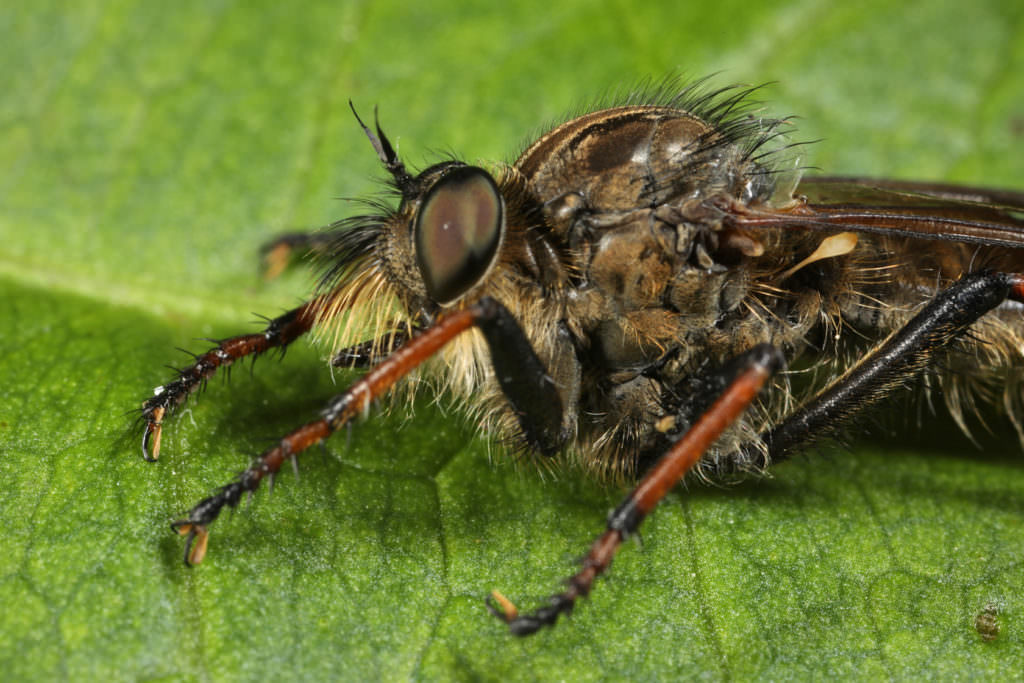
Pied-winged robberfly (Pamponerus germanicus), Findhorn Hinterland
In 2019, during a survey on the Hinterland for Diptera or two-winged flies, a species that is on the Scottish Biodiversity List – the pied-winged robber fly (Pamponerus germanicus) – was found. The fly preys on beetles & parasitic wasps, and is restricted to 3 small coastal areas in Scotland, of which our land is one. The significance of this discovery is shown by the fact that a photograph I took of the fly featured on the cover of the Dipterist’s Digest journal, the specialist publication for two-winged flies. During the same survey in 2019, the identification of another fly (Metopia tshernovae) was the first confirmed record for this species (which is restricted to coastal sites) in the UK.
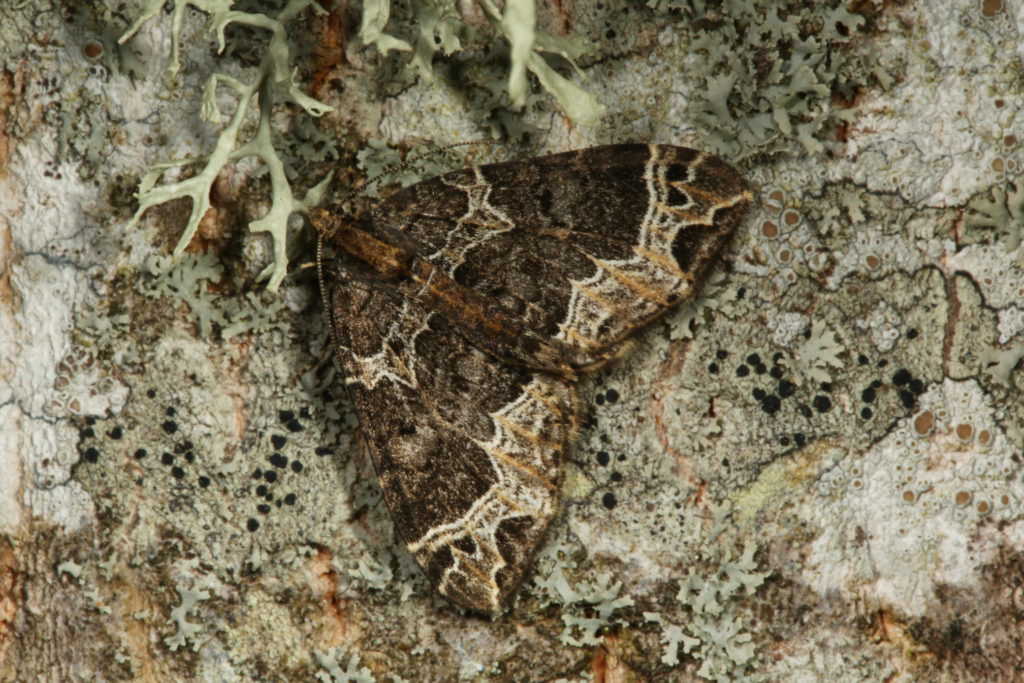
Small phoenix moth (Ecliptopera silaceata), Dundreggan
Amongst the 4 moth species, one (Scythris empetrella) has only been found at 2 sites in Scotland, of which the Findhorn dunes is the most important, and another (Caryocolum blandelloides) is restricted in the UK to the sand dunes of the western Moray Firth.
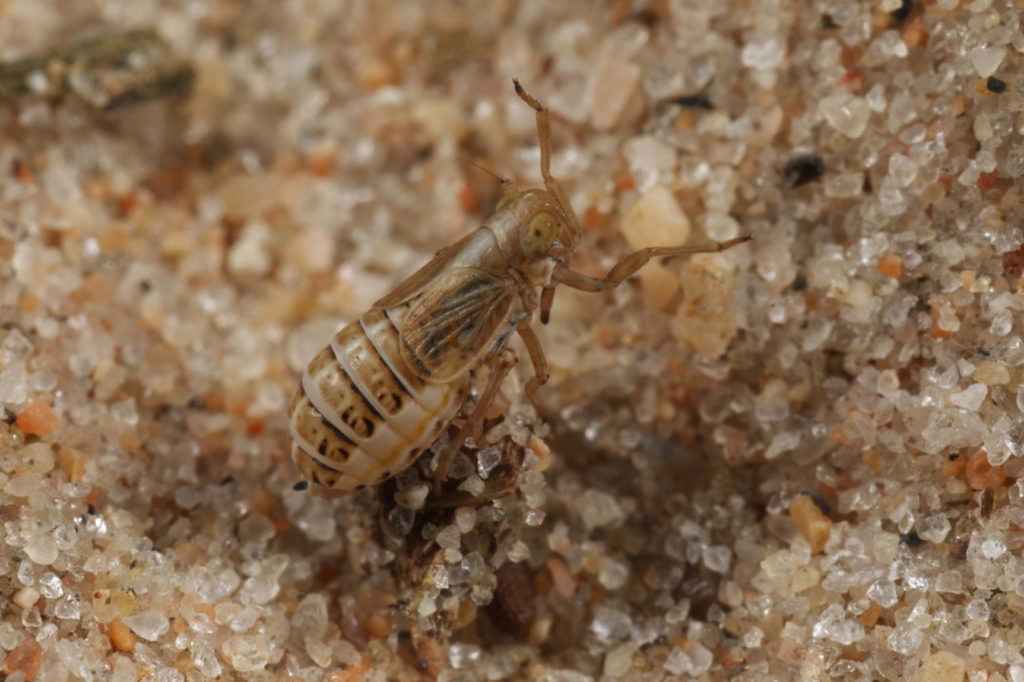
Planthopper (Muirodelphax aubei), Findhorn Hinterland
As I reported in our last newsletter, the survey for true bugs that we commissioned in 2023 identified 2 species of particular note. Those are a leafhopper (Gravesteiniella boldi) which occurs in coastal sandhills with marram grass and is very rarely recorded (this was the first record for Scotland), and a planthopper (Muirodelphax aubei), which has only been recorded at one other site in Scotland.
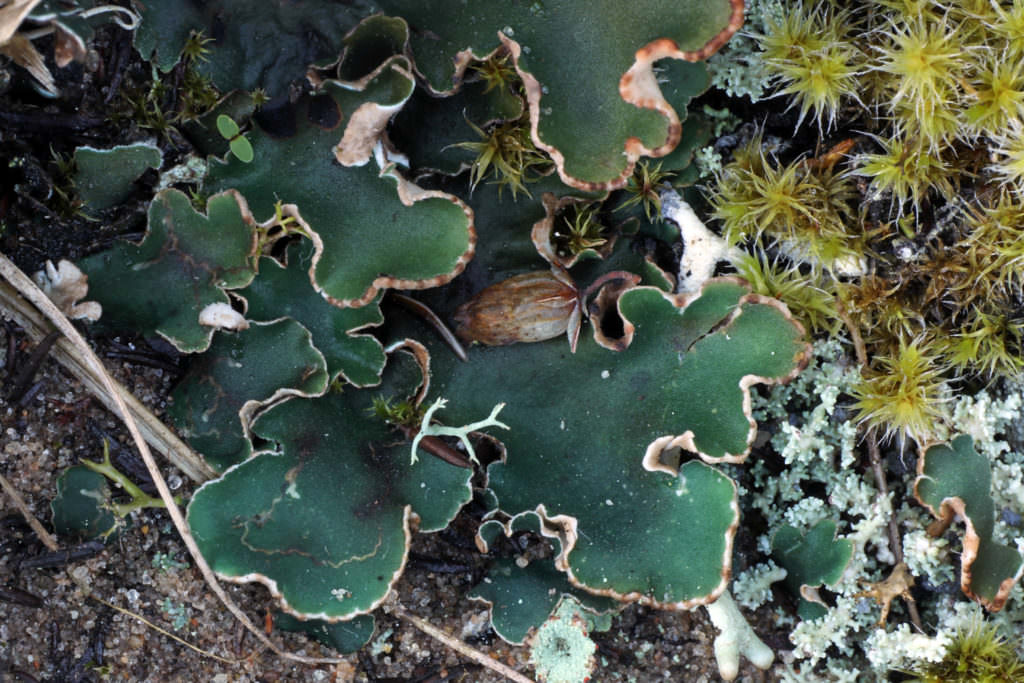
Dog lichen (Peltigera malacea) beside moss on the Findhorn Hinterland.
Of the 4 significant lichens the most important is matt felt lichen (Peltigera malacea), which is Nationally Rare and classified as Endangered in the Red Data Book of threatened species. It’s quite common on sand and near moss here, and is also the host for one of the lichenicolous fungi species (Dacampia peltigericola) on our list. Another of those lichenicolous fungi is Polycoccum trypethelioides, which grows on a lichen (Stereocaulon condensatum) that is a pioneer species and is often the first lichen to appear on bare sand.
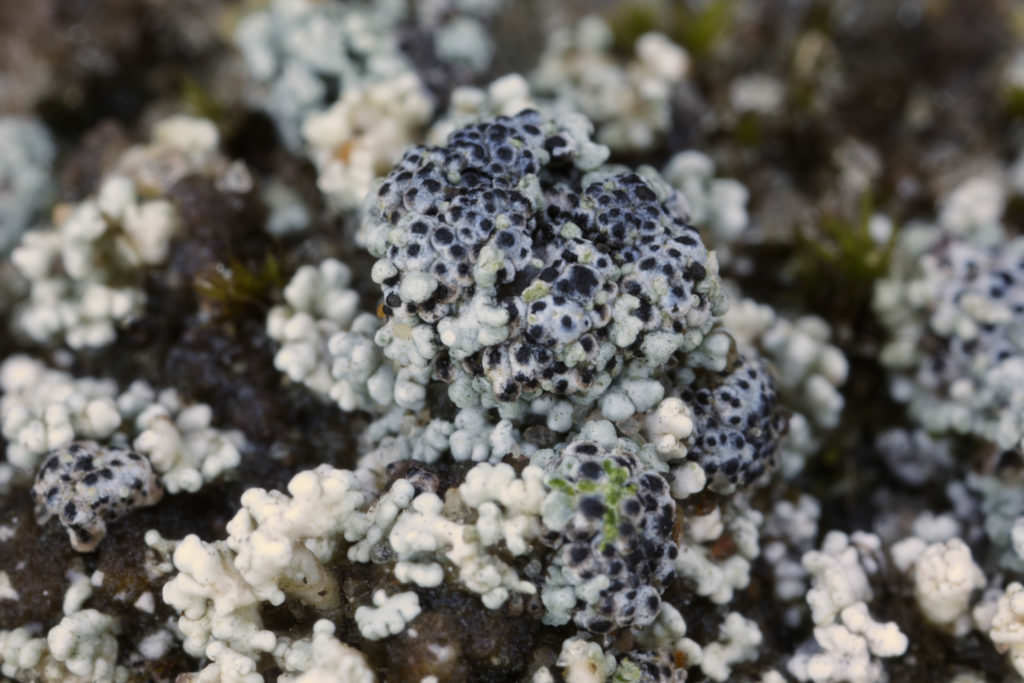
Lichen (Stereocaulon condensatum) with a lichenicolous fungus (Polycoccum trypethelioides) on it.
The sandy earthtongue fungus (Sabuloglossum arenarium) is a sand and dune heath specialist species that has only been confirmed at 2 sites in the UK, of which Findhorn is one.
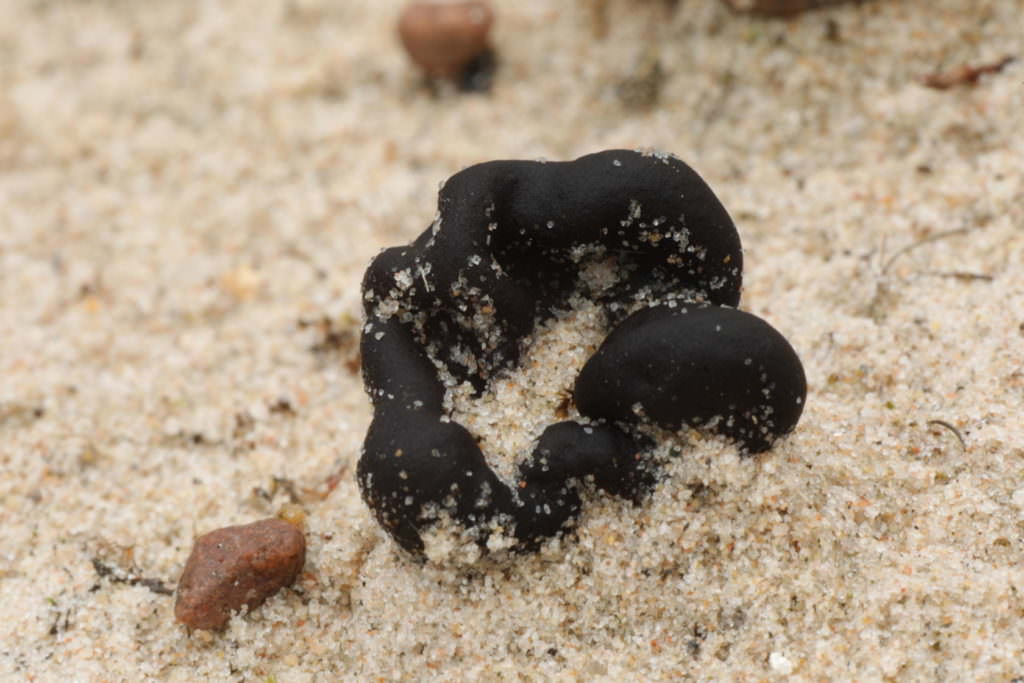
Sandy earthtongue fungus (Sabuloglossum arenarium) on sand, Findhorn Hinterland
All of these species, plus other more abundant ones such as the small heath butterfly, common lizard, small phoenix moth, brown hare and the linnet, will benefit from this vital dune restoration work that we will be carrying out in the coming years.
Alan Watson Featherstone,
FHT Trustee & Chair of the Land Management subgroup.
14th February 2024




Rare species
The focus of our Dune Restoration Project
The Findhorn Hinterland Trust’s new Dune Restoration Project will be a central and important element of our work for the next few years, and its core purpose is to ensure that there is good habitat on the land that we manage for the rare species that live in the UK’s shifting sand ecosystems. Here, that habitat has been decreasing due to the expansion of gorse scrub and the spread of invasive non-native lodgepole pines, and, without action to address those issues now, it is highly likely that the species which make their home in it will disappear completely. However, by clearing key areas of gorse and young trees we will ensure that there continues to be a good habitat here for these unique and special species.
Whilst there is a considerable range of species that live in coastal sand dunes, we have highlighted 17 species that are of particular note and/or rarity. They include 4 species of fly, 4 different moths, 2 hoppers, 3 lichens and 3 species of fungi, 2 of which are lichenicolous (meaning that they are found on, and feed from, lichens). These are the ‘star species’ of the dune restoration project and I will briefly describe some of them here.
Pied-winged robberfly (Pamponerus germanicus), Findhorn Hinterland
In 2019, during a survey on the Hinterland for Diptera or two-winged flies, a species that is on the Scottish Biodiversity List – the pied-winged robber fly (Pamponerus germanicus) – was found. The fly preys on beetles & parasitic wasps, and is restricted to 3 small coastal areas in Scotland, of which our land is one. The significance of this discovery is shown by the fact that a photograph I took of the fly featured on the cover of the Dipterist’s Digest journal, the specialist publication for two-winged flies. During the same survey in 2019, the identification of another fly (Metopia tshernovae) was the first confirmed record for this species (which is restricted to coastal sites) in the UK.
Small phoenix moth (Ecliptopera silaceata), Dundreggan
Amongst the 4 moth species, one (Scythris empetrella) has only been found at 2 sites in Scotland, of which the Findhorn dunes is the most important, and another (Caryocolum blandelloides) is restricted in the UK to the sand dunes of the western Moray Firth.
Planthopper (Muirodelphax aubei), Findhorn Hinterland
As I reported in our last newsletter, the survey for true bugs that we commissioned in 2023 identified 2 species of particular note. Those are a leafhopper (Gravesteiniella boldi) which occurs in coastal sandhills with marram grass and is very rarely recorded (this was the first record for Scotland), and a planthopper (Muirodelphax aubei), which has only been recorded at one other site in Scotland.
Dog lichen (Peltigera malacea) beside moss on the Findhorn Hinterland.
Of the 4 significant lichens the most important is matt felt lichen (Peltigera malacea), which is Nationally Rare and classified as Endangered in the Red Data Book of threatened species. It’s quite common on sand and near moss here, and is also the host for one of the lichenicolous fungi species (Dacampia peltigericola) on our list. Another of those lichenicolous fungi is Polycoccum trypethelioides, which grows on a lichen (Stereocaulon condensatum) that is a pioneer species and is often the first lichen to appear on bare sand.
Lichen (Stereocaulon condensatum) with a lichenicolous fungus (Polycoccum trypethelioides) on it.
The sandy earthtongue fungus (Sabuloglossum arenarium) is a sand and dune heath specialist species that has only been confirmed at 2 sites in the UK, of which Findhorn is one.
Sandy earthtongue fungus (Sabuloglossum arenarium) on sand, Findhorn Hinterland
All of these species, plus other more abundant ones such as the small heath butterfly, common lizard, small phoenix moth, brown hare and the linnet, will benefit from this vital dune restoration work that we will be carrying out in the coming years.
Alan Watson Featherstone,
FHT Trustee & Chair of the Land Management subgroup.
14th February 2024